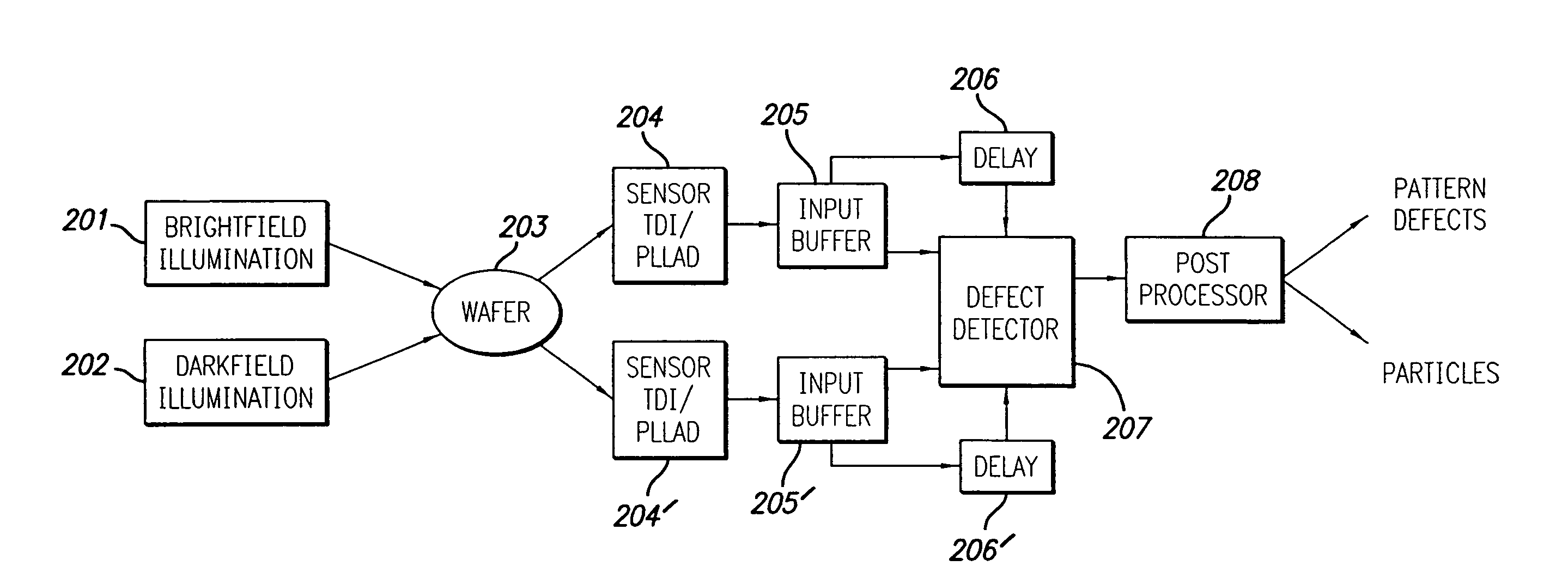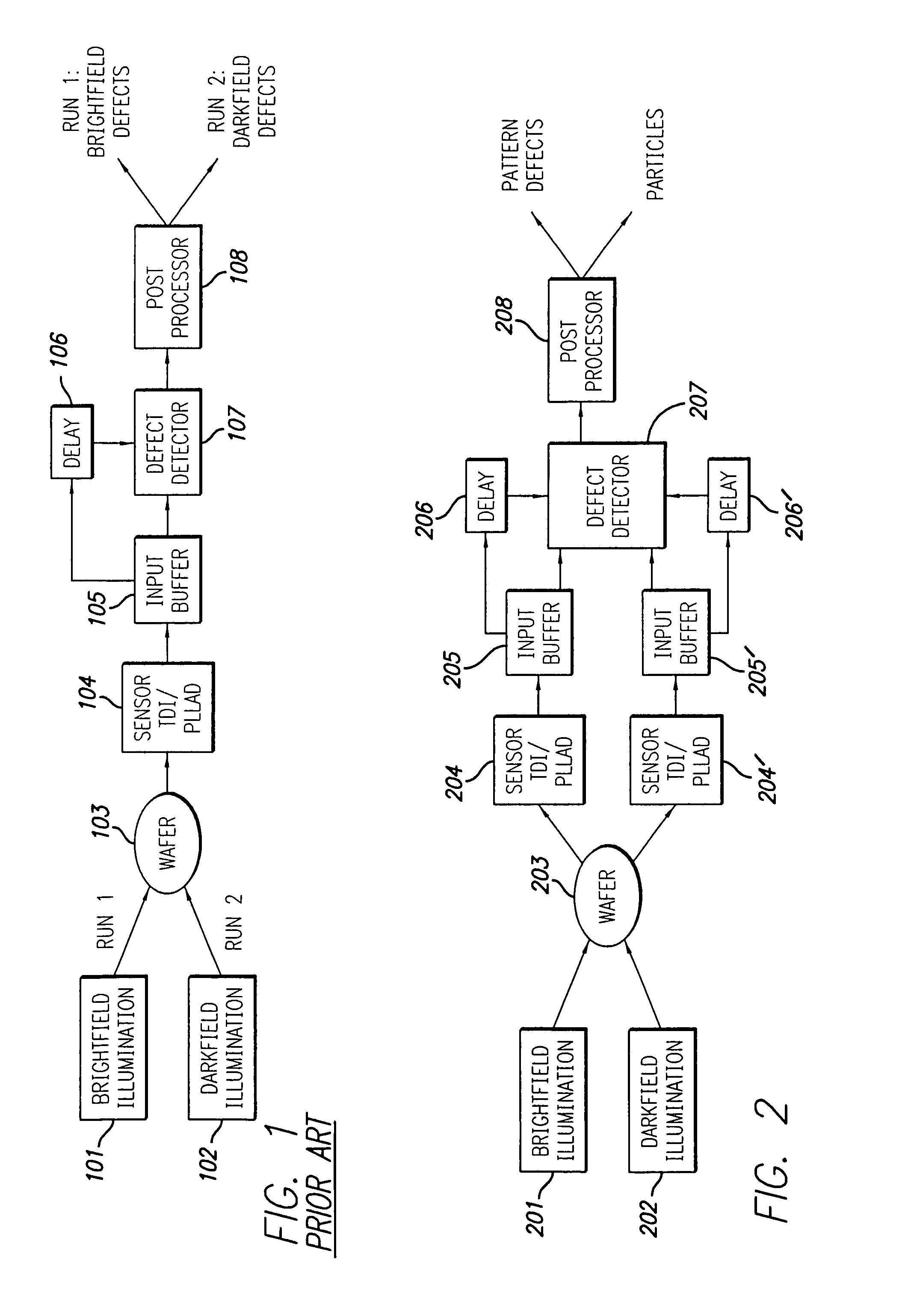High throughput brightfield/darkfield water inspection system using advanced optical techniques
a brightfield/darkfield wafer and inspection system technology, applied in the field of optical inspection of semiconductor wafers, can solve the problems of low background return, difficult detection of particles, low detection efficiency, etc., and achieve the effect of greater detection levels
- Summary
- Abstract
- Description
- Claims
- Application Information
AI Technical Summary
Benefits of technology
Problems solved by technology
Method used
Image
Examples
Embodiment Construction
[0055]The inventive system herein combines large pixel DDF (Directional Dark Field) illumination with broadband brightfield illumination to enable increased sensitivity to previous brightfield systems at higher throughput with reduced image computing power. The system includes a dual darkfield illumination module, providing two laser illumination beams having adjustable grazing angle, light level, and polarization.
[0056]Darkfield imaging collects scattered light from a defect, while brightfield imaging collects reflected light. At a given pixel size, a very small (sub-pixel) imaging system averages everything seen in the pixel, including defect plus background. Brightfield imaging uses a small enough pixel to resolve the edges of the defect and thereby detect a contrast. Darkfield imaging averages everything contained in a pixel, but the background is always black, and even small defects have a tendency to scatter large amounts of light. A flat, opaque defect may scatter very little...
PUM
| Property | Measurement | Unit |
|---|---|---|
| angle | aaaaa | aaaaa |
| azimuth angle | aaaaa | aaaaa |
| azimuth angle | aaaaa | aaaaa |
Abstract
Description
Claims
Application Information
 Login to View More
Login to View More - R&D
- Intellectual Property
- Life Sciences
- Materials
- Tech Scout
- Unparalleled Data Quality
- Higher Quality Content
- 60% Fewer Hallucinations
Browse by: Latest US Patents, China's latest patents, Technical Efficacy Thesaurus, Application Domain, Technology Topic, Popular Technical Reports.
© 2025 PatSnap. All rights reserved.Legal|Privacy policy|Modern Slavery Act Transparency Statement|Sitemap|About US| Contact US: help@patsnap.com



